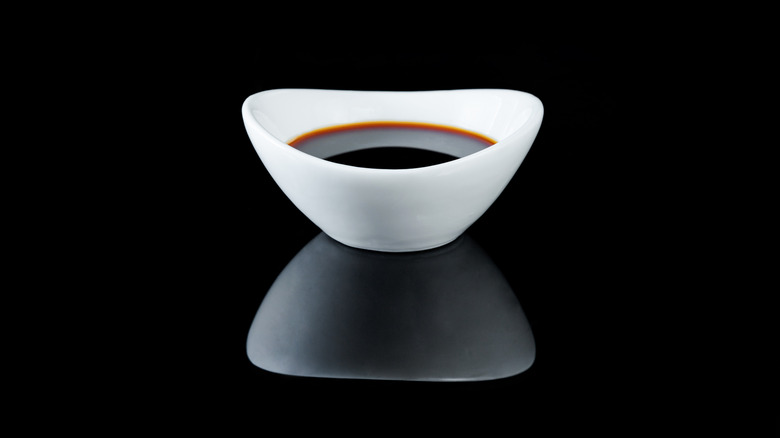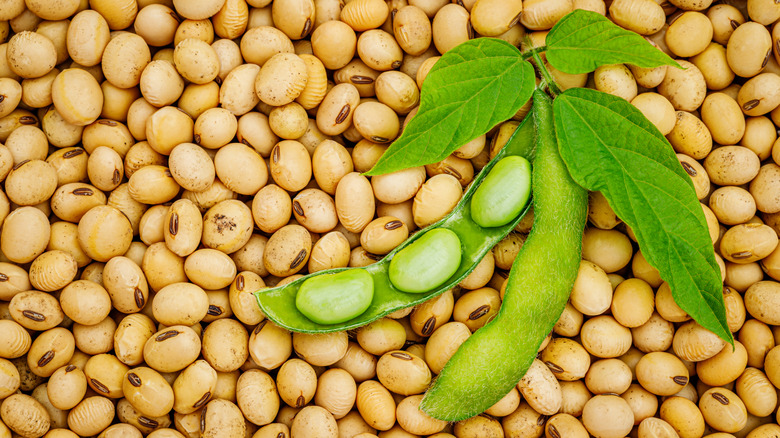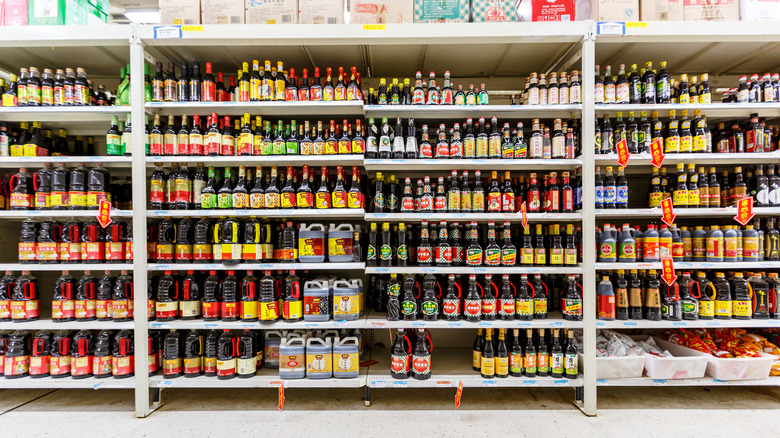What Makes Shoyu So Unique
Many Americans have likely studied the ingredients of a Japanese recipe and wondered if they can substitute soy sauce for shoyu. The question is redundant, as they are one and the same — to a degree. All shoyu is soy sauce, but not all soy sauce is shoyu. The term "shoyu" exclusively refers to the Japanese style of soy sauce, which first appeared in the town of Yuasa in the late 13th century, according to BBC.
Soy sauce had originated in China approximately 10 centuries prior, per ScienceDirect. As the legend related by BBC goes, a Japanese Buddhist monk named Shinchi Kakushin traveled to China where he learned a recipe for Kinzaji miso, a chunky paste of fermented soybeans and other grains. Kakushin brought the technique to Japan when he returned to serve as the abbot of a temple near Yuasa. Locals loved the miso, but also the dark brown liquid that pooled at the bottom of the fermenting barrels, which they originally called "tamari."
How is shoyu made?
The traditional Japanese method of brewing shoyu is known as "honjozo," as explained by Kikkoman, the world's largest producer of shoyu. It begins by steaming soybeans and roasting crushed wheat. These are combined with a unique type of fungus called Aspergillus to form a mixture known as koji. The koji is combined with water and salt to form a blend called moromi, which is allowed to ferment for several months to develop its characteristic mild salty flavor.
During the months of aging, the soy sauce also develops its distinct color. Masterclass explains that the fermentation process releases sugars that react with the amino acids in the soybeans to form a rich, dark hue. This is an example of the Maillard reaction, which can also be seen in the deep brown shade of roasted coffee beans and the black char on a barbecued steak. After months of fermenting, the moromi is a thick mash. This is pressed between layers of cloth to squeeze out all of the pure, clear shoyu. The process takes over 10 hours to complete when done properly, and rushing it could make the resulting soy sauce cloudy. Finally, the shoyu is heated and clarified to remove any remaining oils and solids.
Shoyu vs. Chinese soy sauce
According to Kikkoman, the key difference between shoyu and the original Chinese iteration of soy sauce is the addition of wheat. The classical Chinese style of brewing soy sauce only called for fermenting soybeans. However, some modern manufacturers bypass the fermentation process altogether, instead using a chemical process called acid hydrolysis to speed up soy sauce production. According to ScienceDirect, this involves introducing the soy to a hot hydrochloric acid solution.
Another thing to keep in mind, when comparing shoyu to other kinds of soy sauce, is the gluten content. Because shoyu contains wheat, it is not gluten-free, limiting those that can freely enjoy it. Traditional Chinese soy sauce may be a better option if you're gluten-intolerant. However, Japan also has a gluten-free offering, which takes its name from the very first batch of Japanese soy sauce produced so many centuries ago by Shinchi Kakushin — tamari. Today, Healthline explains that tamari has a more narrow definition, specifically denoting a form of soy sauce made exclusively from soybeans, therefore being gluten-free.


